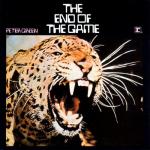This is just for my curiosity, sort of, but does anyone have a formula for calculating the energy needed to produce sound at different frequencies, dB's being equal? I suspect low frequencies contain (relatively) enormous energy and need big watts to produce them, but I haven't found a formula to quantify the relationship yet.
I'm using a 300 watt amp for 290hz on down and six tube watts above, and it seems about right. I would like to see what mathematics has to say about it.
I am also curious about the whole HT sub thing. I want to see some science applied to the choice of amplification there.
Also, a somewhat related topic: when a master line level volume control is used, what is the best position for power amp volume? I use about eleven o'clock. This is all about headroom and tone, of course.
Clark in Peoria




 Reply With Quote
Reply With Quote

 for directors' craft, acting, cinematography and writing. When I spot a model-turned-actress staring in a film aimed at teenagers I run the other way. It is not the effects that make or break a film's quality. I'll give Spielberg's War Of The Worlds a ten and Pearl Harbor a minus six. For the stated reasons.
for directors' craft, acting, cinematography and writing. When I spot a model-turned-actress staring in a film aimed at teenagers I run the other way. It is not the effects that make or break a film's quality. I'll give Spielberg's War Of The Worlds a ten and Pearl Harbor a minus six. For the stated reasons.




